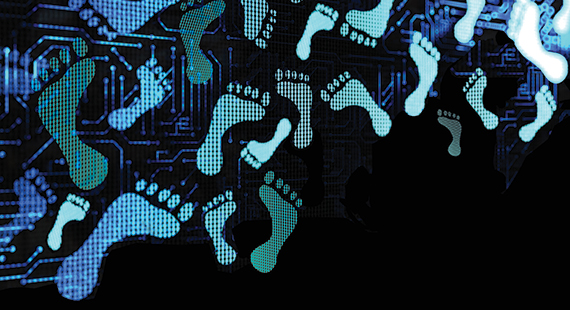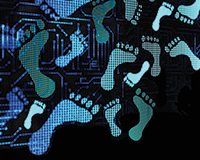 In many areas of property, things are “getting smarter”: offices with remotely programmed settings, and iPads offering smiley/sad face feedback in leisure are just two examples. Even sheds are getting funky, with picking and packing robots operated through the cloud.
In many areas of property, things are “getting smarter”: offices with remotely programmed settings, and iPads offering smiley/sad face feedback in leisure are just two examples. Even sheds are getting funky, with picking and packing robots operated through the cloud.
Monitoring footfall, one of the hardiest retail stats of the lot, has until now been surprisingly lo-fi, moving from infrared door-top beams to cameras and sensors and not much else.
Until now. Working with University College London, the Local Data Company is working on the SmartStreetSensor project. Funded by the Economic & Social Research Council, it is billed as the most comprehensive UK footfall study ever undertaken. Over three years, it is intended to offer insight into how high streets are used, how that use is changing, and what affects footfall patterns.
Over the past 18 months, LDC has had its own units built that will track WiFi-enabled devices in 84 high street locations. Six hundred of the 1,000 devices that will be used are now in operation across a broad mix of retail pitches. The final ones will be installed early in 2017.
LDC chief executive Matthew Hopkinson says: “It’s all about helping retailers with the question of where might be a profitable location for them; and bringing landlords and occupiers together with one set of common, independent data. We can help inform a less adversarial relationship.”
Tim Denison, director at Ipsos Retail Performance, agrees. He says: “Landlords and tenants are working more collaboratively. There’s mutual benefit in strengthening footfall, because the real competition is the shopping centre in the neighbouring town.”
Essentially, the LDC devices read the numbers of people just outside a shop – the “pavement opportunity”. The data is calibrated with that provided by the field-based research team LDC uses, which gets around the issue that not everybody has a smartphone with WiFi switched on. The combined data provide accurate readings.
SmartStreetSensor is about collating information on how factors such as demographics, competitor density and nearby vacancy rates affect profitability of specific locations, to give retailers more understanding of how a location might perform.
Hopkinson adds: “It’s a transparent data set that will be there forever and a day. You can see the heartbeat of these places and how it plays back into profitability. What we provide is robust data with no political or commercial bent.”
For Denison, the possibilities are exciting. “The growth of mobile technology offers us the ability to do much more within shopping centres,” he says. “What percentage of visitors visit all the anchor stores? Which do they visit first? Where are the ‘hot’ and ‘cold’ areas, and what are the combinations of stores people visit?”
A legal word of warning comes from Matt Hervey, director at Gowling WLG. He says: “Retailers must ensure that great customer experience outweighs ‘big brother’ concerns. They must provide timely and clear information to obtain customers’ informed consent to sharing data. They will have to partner with communication, software and data specialists and should seek contractual protections against unprecedented exposure to cybersecurity, data protection and reputational risks.”
With that in mind, wireless technology has many other applications of use to landlords.
Pete Derry, innovations director at facilities manager Interserve, says: “It’s now possible to further improve customer experience by scheduling cleaning and maintenance works around them. It’s not just busy times – there are fewer complaints about maintenance work on hot days, for example. And smart technology can be used with things like bin sensors. It allows facilities managers to allocate their staff more effectively.”
Dagmara Lacka, chief executive of smart cities technology firm Boldmind, says: “The challenge with footfall information is what to do with it, and a real time platform allows you to work quickly. You can address low footfall in parts of an estate by incentivising people, scheduling events or providing prompts on marketing screens. The technology is already there.”
The workplace angle
Architectural firm Hawkins\Brown has recently completed a pilot project on workplace tracking. Over a three-week period, in its own studio of 250 people, its research department generated heat maps and collision graphs, as the team sought answers on issues including spatial reach, collision points and the extent to which privacy levels affect meeting room use. The business worked with tech company Pointer and BuroHappold on the project, which used Bluetooth technology.
Partner Darryl Chen says: “It’s a piece of work bordering on organisational research. We’ll be offering it to clients as part of a package. For example, one detail was that senior staff were more mobile than juniors. That sort of information might help companies.
“This provides real-time accurate information on how people spend their time. It’s the sort of intelligence we’re seeing adopted increasingly throughout the knowledge economy.”











